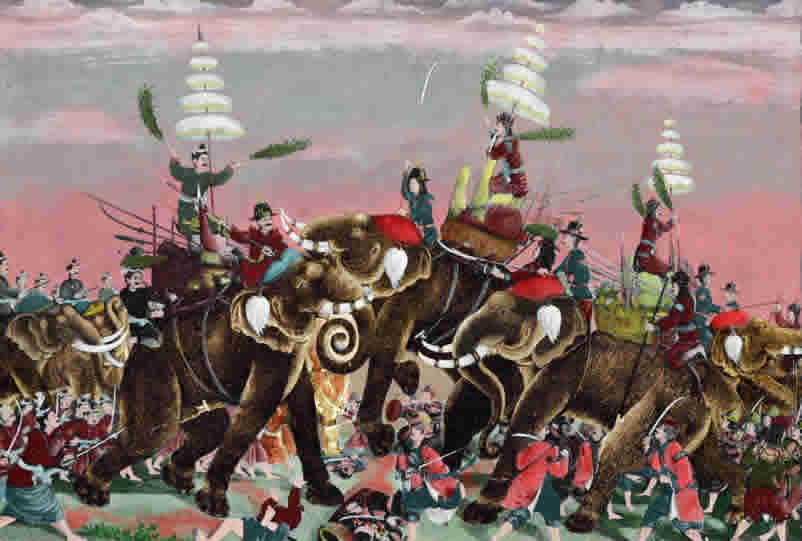 |
| Siamese-Burmese War |
Conflict between Siam and Burma was common in the 18th century the Burmese fought a series of civil wars against the Mons, who created their own state in 1740. The Mons’ success at achieving independence failed to ease tensions between them and the Burmese, and the Mons sacked Ava, the Burmese capital, in 1752 and captured the Burmese royal family, ending the Toungoo dynasty’s control.
The Burmese continued to fight the Mons after Alaungpaya assumed the role of leader of the Burmese forces and pushed the Mons into lower Burma. This fighting witnessed the subjugation of the city of Syriam in 1756, followed by the conquest of the Mon city of Pegu the following year.
This conflict with the Mons was followed by war with Siam in 1759, as Alaungpaya used the excuse of a revolt in Tavoy to justify this war. Alaungpaya accused the Siamese officials in the nearby areas of Tenasserim and Mergui of inciting this rebellion, prompting Alaungpaya to invade Siam in order to maintain the honor and prestige of Burma.
  |
Alaungpaya did not live long enough to become deeply involved in this conflict, as he died in 1760 during the siege of Ayudhya (Ayutthaya), the Siamese capital. Despite the fact that Alaungpaya failed to make any cultural contributions to Burma during his reign, his effective military policies enabled his successors to inherit a strong, united state for further conflict against Siam.
Naungdawgyi succeeded Alaungpaya, but his reign was cut short because of a revolt in the army partially incited by his orders to execute two of his generals. Hsinbyushin, the son of Alaungpaya, came to power in 1763 and continued the conflict against Siam in 1765.
This renewed war witnessed the siege of Ayudhya, which began in 1766 and ended when the city capitulated on April 7, 1767. This victory changed the geopolitics of the region, as Burma was able to capture thousands of Siamese and kill a significant portion of the Siamese nobility and royal family, leaving Siam without a ruler.
Following this massacre of the royal family, a number of candidates attempted to claim the throne of Siam. Some of the rivals for the throne included government officials such as the governors of Phitsanulok and Nakhon Si Thammarat; a member of the royal family who eluded the Burmese and was living in the northeastern section of Siam; Buddhist monks residing in the vicinity of Uttaradit; and a man named Sin, who was the ex-governor of Tak.
Sin was able to subdue his opponents and crown himself king of Siam because he had a strong following. He was also able to halt the Burmese advance into western Siam, also maintaining the cohesion for Siam.
The victory of Burma in the Siamese-Burmese War prompted the Siam government to construct Thonburi, the new capital of Siam, which was situated on the Chaophraya River. This relocation allowed the Siam government to consolidate itself and extend its influence into neighboring regions.
During the 1770s the Siam government was able to launch a number of expeditions in order to assert its influence over Cambodia and Laos. The Siam government was also able to assert its influence over Chiang Mai when it captured the city in 1773.
The Burmese government had more to contend with besides Siam, as Burma and China became entangled in a war in 1766. This conflict was followed by more fighting after the Burmese government deposed the ruler of Manipur, replacing him with its own candidate.
The Burmese government was eager to seek more territory in Southeast Asia and engaged in another conflict against Siam, but it failed to make substantial gains. The Siamese-Burmese War altered the dynamics of Southeastern Asia, as Burma was able to extend its influence into parts of Siam, forcing Siam to move into Cambodia and Laos.